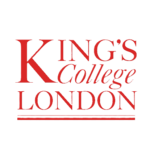Overview
Postdoctoral Research Associate in Molecular Imaging – Strand, London, WC2R 2LS
About Us
The Faculty of Life Sciences & Medicine is one of the largest and most successful centres for research and education in the UK. The Faculty was created as a result of the merger of elements of the School of Biomedical Sciences with the School of Medicine. The merger brings together basic, translational and clinical scientists to provide new cross-School research collaborations while optimising the deployment of teaching expertise across the Faculty. The Faculty has unparalleled expertise in basic, translational and clinical research in: analytical and forensic science; asthma and allergy; biophysics and cell biology; cancer; cardiovascular; nutrition and diabetes; genetics; infection and immunology; imaging and biomedical engineering; transplantation immunology; pharmaceutical science; physiology and women’s health. We also have thriving research programmes in global health, and health and social care. Further information about the Faculty of Life Sciences and Medicine may be found at https://www.kcl.ac.uk/lsm/index.aspx
Within FoLSM, the School of Biomedical Engineering and Imaging Sciences is a cutting-edge research and teaching School dedicated to development, translation and clinical application within medical imaging and computational modelling technologies. Our objective is to facilitate research and teaching guided by clinical questions and is aimed at novelty, understanding of physiology and pathophysiology as well as development of new diagnostic tools and therapies. In this way, basic science can be rapidly translated into clinical applications (and vice versa). The School consists of eight research departments: Cardiovascular Imaging, Cancer Imaging, Early Life Imaging, Imaging Chemistry & Biology, Biomedical Computing, Surgical & Interventional Engineering, Imaging Physics & Engineering and Digital Twins for Healthcare.
The Research Department of Imaging Chemistry and Biology comprises a group of ca. 50 scientific and clinical researchers who drive translational radiopharmaceutical development, theragnostics, nanotechnology, metallomics, immuno-imaging, metabolic imaging, functional cardiac imaging, radiobiology, and engineering solutions for GMP radiopharmaceutical production. Embedding highly innovative scientists alongside clinical staff in a hospital environment has offered an unparalleled opportunity for translational impact that is being realised across the world-leading research infrastructure.
About The Role
The role is to undertake a body of work aimed at developing molecular imaging techniques to non-invasively quantify cardiac mitochondrial capacity as an early biomarker of evolving cancer-therapy induced cardiotoxicity. The post-holder would provide expertise as a lead imaging scientist in a multi-disciplinary team of radiochemists, biologists, preclinical molecular imaging scientists and electron microscopists. Particular expertise is required in cardiac molecular imaging alongside traditional methods for assessment of cardiac viability, including echocardiography.
The post holder will join the department of Imaging Chemistry & Biology, and work across 3 sites, at KCL, the Royal Veterinary College and the Francis Crick Institute, with the specific role of validating our molecular imaging techniques using an array of biochemical and biophysical technologies. The post holder will work alongside another PDRA employed on the project, who will be a radiochemist based primarily at Imperial College London.
We are looking for a talented and self-motivated scientist with a strong expertise in cardiac molecular imaging with a demonstrably flexible and adaptable mindset and a track record of learning and developing new analytical techniques. The post holder will work collaboratively with research groups externally, potentially including industrial partners.
The post holder will be expected not only to perform projects within their specified remit but also to provide training, assistance and advice to other workers and collaborators. The role may be a basis for first-author publications on the development of preclinical imaging methodology in this field as well as co-authoring user-led publications.
This is a full-time post (35 hours per week) and you will be offered a fixed term contract of 36 months from start date.
















